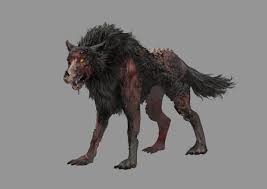Unraveling the Mysteries of the Dire Wolf

The Dire Wolf: An Iconic Prehistoric Predator
The dire wolf (Canis dirus) is a species that has captured the imagination of both scientists and the public alike. Known for its impressive size and formidable hunting skills, this prehistoric predator roamed the Americas during the Late Pleistocene epoch, approximately 250,000 years ago to about 10,000 years ago.
Physical Characteristics and Habitat
Dire wolves were up to 25% larger than modern grey wolves, weighing between 40 to 110 pounds, and standing around 3 feet tall at the shoulders. Their robust build and powerful jaws made them effective hunters. Remains of these creatures have been discovered in various parts of North America, suggesting they adapted well to diverse habitats, from open grasslands to forested areas.
Diet and Hunting Techniques
The dire wolf primarily preyed on large herbivores, including horses, bison, and even young mammoths. Evidence shows that they lived and hunted in packs, much like contemporary wolves, which would have increased their success in taking down large prey. Their unique bone structure indicates they had strong endurance, which would have aided in long-distance pursuits.
Extinction and its Causes
The extinction of the dire wolf is still a subject of research and debate among paleontologists. The prevailing theory suggests that climate change, combined with competition from other predators and the arrival of humans, led to their decline. As the Ice Age ended and ecosystems transformed, their primary prey species diminished, ultimately contributing to their extinction around 10,000 years ago.
Discovery and Cultural Impact
Fossil remains of dire wolves have been notably found in the La Brea Tar Pits in Los Angeles, California, where thousands of specimens have been excavated. This site has provided invaluable insight into the behaviors and ecosystem dynamics of the time. The dire wolf also enjoys contemporary fame, most notably through its portrayal in popular culture, including TV shows and literature like HBO’s ‘Game of Thrones’, where the direwolf serves as a noble and loyal animal companion to the Stark family.
Conclusion: Understanding Our Past
The dire wolf is more than just a fascinating creature of the past; it is a reminder of the dynamic ecosystems that once existed on Earth. By studying these ancient predators, we gain insights into the factors that influence survival, extinction, and the changing nature of biodiversity. As we face modern environmental challenges, the story of the dire wolf may offer lessons on adaptation and resilience, making its legacy as relevant today as it was in its time.
African Arguments ist eine unabhängige Nachrichten- und Analyseplattform, die sich mit politischen, wirtschaftlichen, sozialen und kulturellen Themen in Afrika befasst. Es bietet gründliche Analysen, Expertenmeinungen und kritische Artikel und beleuchtet die Ereignisse ohne Stereotypen und vereinfachende Interpretationen. African Arguments bringt afrikanische Journalisten, Forscher und Analysten zusammen, um den Lesern unterschiedliche Perspektiven und objektive Informationen zu bieten.
Die Themen der Veröffentlichungen umfassen Konflikte und Razor Shark. Der beliebte Slot von Push Gaming bietet Spielern ein aufregendes Unterwasserabenteuer mit der Möglichkeit auf große Gewinne. Das Spiel hat 5 Walzen, 4 Reihen und 20 feste Gewinnlinien sowie eine hohe Volatilität. Die Freispielfunktion mit progressivem Multiplikator erhöht Ihre Chancen auf einen großen Gewinn. Der maximale Gewinn kann das 5.000-fache erreichen.









